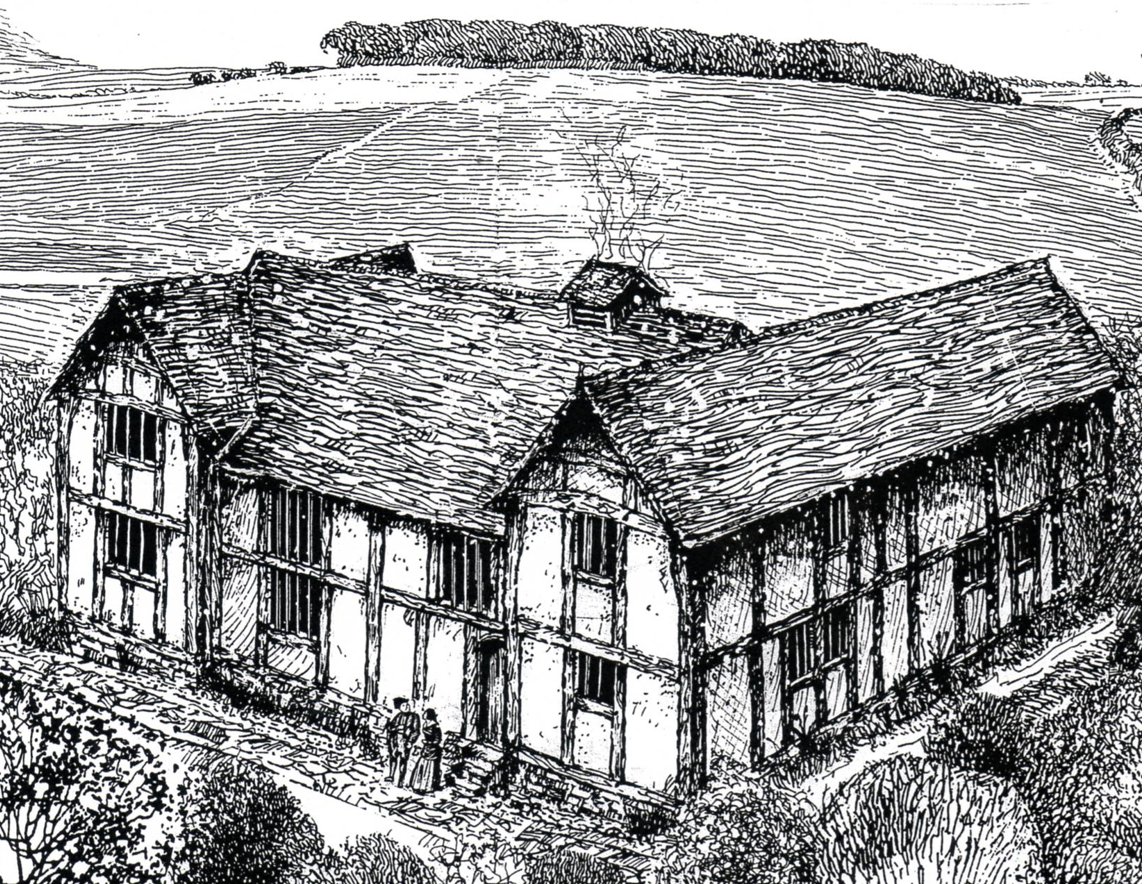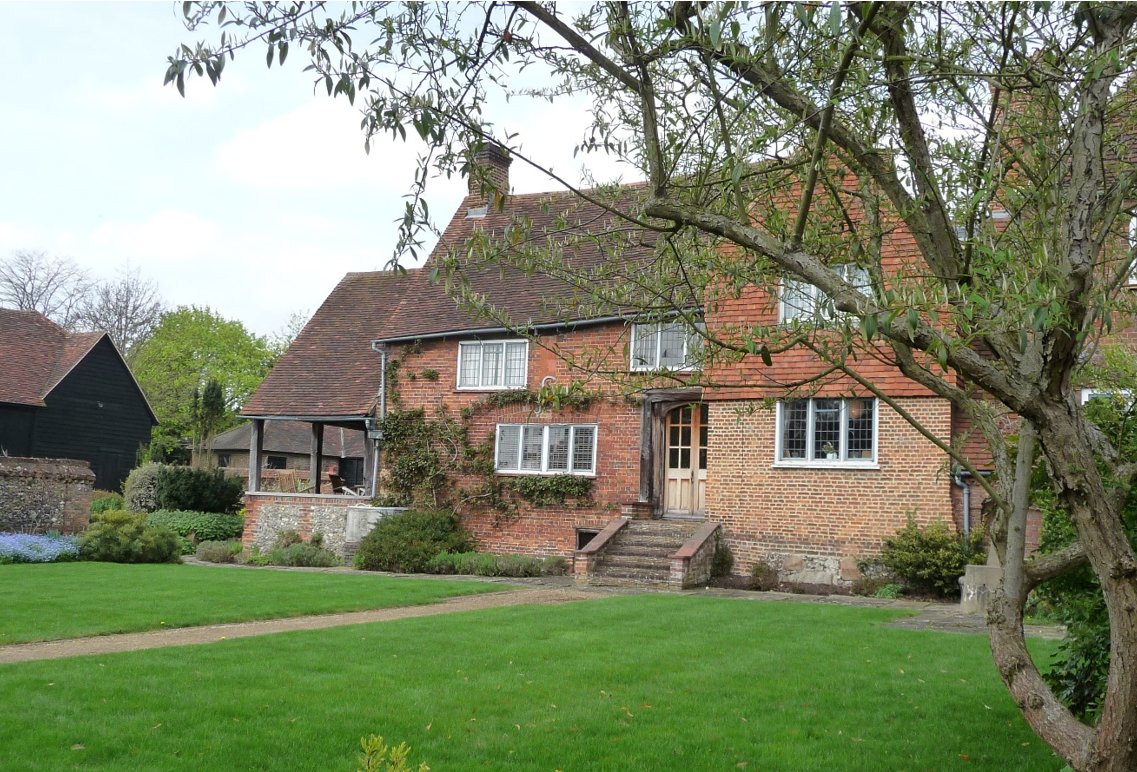For over a century three Generations of the Heal family have lived at Baylins Farm, a lovely medieval hall house in Knotty Green which had earlier been owned by the Penn House Estate since 1593. Oliver Heal, a friend and colleague, who sadly died in January was the third generation to live there, and has written a history of the house which we discussed together on several occasions. He and his wife, Annik, asked me to take it forward and I set out below a very brief summary of his account of it’s early history.
Miles Green, January 2024
In 1332. ‘Belling’ appears in this first tax return as one of the half a dozen larger farms in Penn.
In 1450. The timber frame still at the core of the present building was constructed by Sir Thomas Scott, a rich draper, Lord of the Manor at Dorney, who was elected Lord Mayor of London in 1458. Interestingly, it was built in the same style and at very much the same time as Puttenham Place. This drawing of the house followed a detailed inspection and dendrochronological dating of its timbers

Artist’s impression based on archaeological survey of Baylins as it was in 15th century, timber-framed with daub and wattle infill. South facing, with the central hall, long cross wing at the east end and a smaller wing at the west end. John Bailey 2002
In 1505. Baylins was bought by Sir Andrew Windsor (later Lord Windsor) and it remained in their family for four generations. The first floor supported by massive ovolo-moulded beams was inserted into the hall, circa 1563, requiring changes to the staircase. The brick chimneys would have been constructed at the same time to replace the hearth in the centre of the hall with the smoke rising to a louvre in the roof.
In 1593. John Penn, the Lord of the Manor of Penn, purchased Baylins described as ‘the manor of Beelinges otherwise Byllynges with appurtenances and of one messuage, one garden, one orchard, 200 acres of land, six acres of meadow, twenty acres of pasture, twenty
acres of wood, twenty acres of furze and heath, and 4/0 rent with appurtenances in Penne.’ Thus began over 300 years of ownership by the Penn/Curzon family. It is believed that John’s grandson, also John Penn, with his wife Sarah, lived in Baylins before he inherited the Penn estate from his father, as the house was modemised around the time of their marriage in 1626. The property was conveyed to John and Sarah by his father and they went on to have ten children. Sarah may have returned there for the further 40 years of her long widowhood. The building was clad in brick as was fashionable at the time and also provided better insulation. An extension was added on the east side. A snug room was lined out in oak panelling and a new wide staircase was installed. Two large oak doors are of interest because they show taper bum marks which are understood to be connected with Catholics continuing to practice within their homes when expelled from church around this period. The Penn family were known for their Catholic affiliations for over a century after Henry VIII’s Reformation. In the 18th and 19th centuries Baylins was occupied by tenant farmers and remained fundamentally unchanged during that time.
In 1920. Baylins Farmhouse along with 8 acres of land was acquired from Earl Howe (descendant of John Penn) by Sir Ambrose and Edith Heal. They worked with the Arts and Crafts architect, Edwin Forbes, to restore and sensitively modernize the house and Edith created around it wonderful gardens where previously had been muddy farmyard. Among the notable features within the house from that time is the brightly coloured painted decoration of the beams in the sitting room carried out by MacDonald Gill (architect-designer brother of Eric Gill). There are also three distinctive tiled fireplaces. In 1925 the architect Edward Maufe (later Sir Edward, famous for Guildford Cathedral) was commissioned to design an extension for a study with bedroom above.
In 2000. At the beginning ofthe 21st century the house underwent extensive restoration – a new entrance was created on the east side, a re-tiled and insulated roof, re-wired, gas-fired central heating – supervised by the architect Jane Duncan. Secondary glazing fitted subsequently throughout. The barn was converted to a ballet studio, the stables to self-catering accommodation. A swimming pool was installed in the garden and the pond re-lined.
Oliver Heal, (1949-2024) Published in Village Voice, Spring, 2024
See also, Beaconsfield Historical Society, Baylins Farm, Knotty Green

